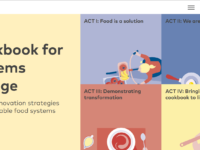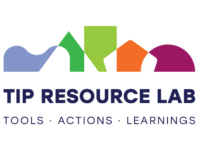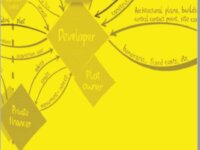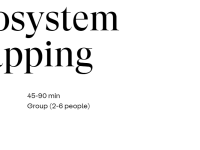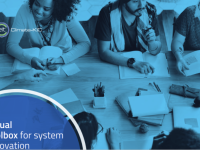Discipline Or Practice: Systems Change
This cookbook of strategies for change is about the role that a strong public innovation system plays along the pathways towards sustainable food systems.
The publishers demonstrate this through a mission approach for deliberate food system transformation that can support people, planet and society. This strategy cookbook includes templates for developing interventions, guides for how to get started and examples of cross-cutting projects – that can be used to create recipes for change. The…
The Transformative Innovation Policy (TIP) Resource Lab contains over 250 resources (such as tools, interactive canvases and narrative guides) structured across five components:
1. Systems, anticipation and transformative theory of change
2. Experimentation in policies and programmes
3. Evaluation using transformative outcomes
4. Capabilities - personal, organisation, and facilitating contestation
5. Knowledge communities and infrastructures
The resource includes lessons for the design and…
Translating global sustainable development goals into concrete actions for systemic change remains one of the greatest challenges of our times, requiring changes in the structures of the sociotechnical systems that define our world. Value Network Mapping helps in getting a grip on the structure of these sub-systems and enables users to identify together intervention points that make sustainability transitions happen. The method helps users co-create such changes, while balancing individual needs…
The Collective Intelligence Design Playbook, created by Nesta, offers a wide range of tools, tactics and methods to engage collective intelligence to solve societal challenges. Through practical instructions and case studies, the Playbook presents ways to orchestrate diverse groups of people, data and technology.
It is designed to be applied by teams or groups and features an introduction to help users understand the scope and potential of collective intelligence, practical guidance to sustain…
The Danish Design Center created the Ecosystem Mapping tool to help users get an overview of their project stakeholders and potential participants and analyse the motivations, resources and capabilities, that will become valuable for the overall ecosystem.
Through its application, users can map all actors (partners, collaborators, contractors, external stakeholders, etc.) in a given ecosystem in order to accomplish its mission. The tool provides users with "Question Cards" to confirm identified…
Mission-oriented innovation aims to create change at the system level where everyone involved is involved and drives development. The working method is a tool for achieving jointly set sustainability goals on a broad basis and with great impact.
In this handbook, we tell about Vinnova's work together with a number of relevant actors to jointly create mission-oriented innovation. You can follow how the actors under 2019-2021 test and develop the working method in the two different areas of food…
This handbook introduces actionable knowledge on developing a Transformative Theory of Change by applying a portfolio approach to address a systems innovation perspective for projects and programmes. Tools, methods and lessons learned are based on working hand in hand with EIT Climate-KIC projects around a portfolio of knowledge services for sustainable systems transformation.
The step-by-step methodology supports practitioners to design, implement and evaluate projects aimed at achieving…
This toolkit offers a starting point and a framework for uncovering circular potentials and barriers and to potentially identify new circular business models. The tools in this toolkit focus specifically on mapping a company's circular potentials in the value chain it operates within. And it gives priority to understanding, framing and re-fining the value businesses create in the value chain, exploring the interaction with both customers, collaborators and influential stakeholders. The toolkit…
The book is a collection of ready-to-implement tools to structure and manage the challenges and exploit opportunities of sustainability and transitions. The goal is twofold: improving the understanding of a challenge by going deeper, broader and by improving the quality of the discussions and conversations around the problem among participants. It focuses not only on the problem-solving process but also on the learning process while designing and implementing solutions. The tools are presented…
This is a collection of six workbooks containing tools and guides for transitioning towards a Circular Economy. The workbooks relate to the six focus areas:
1) Circular Economy Sustainability Screening
2) Circular Economy Business Modelling
3) Circular Product Design and Development
4) Smart Circular Economy
5) Closing the Loop for a Circular Economy and
6) Collaborating and Networking for a Circular Economy.
Each workbook contains an introduction to each Circular Economy topic followed by…

